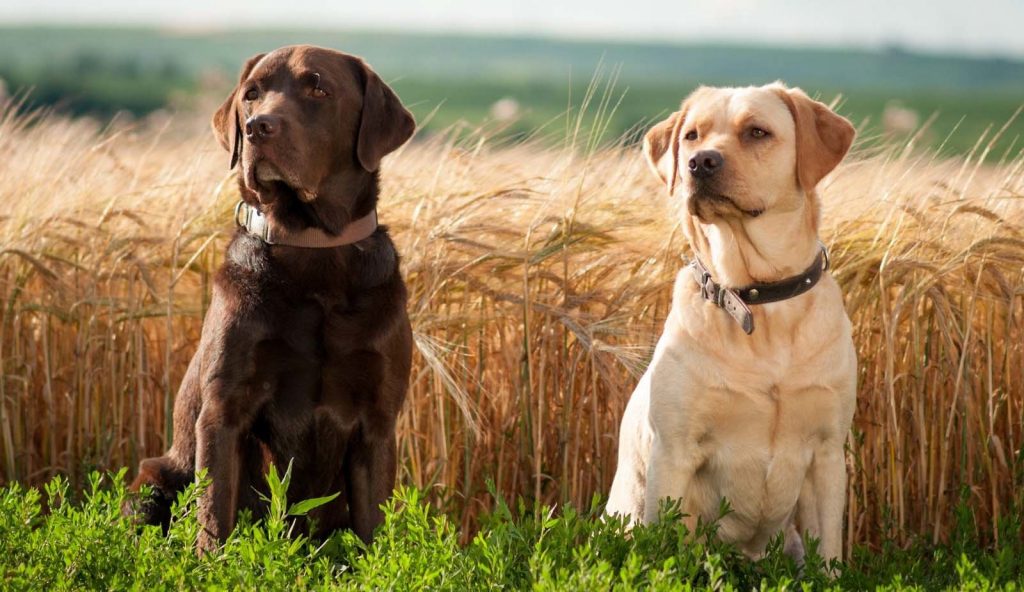History
The Labrador Retriever is popular of all pedigree breeds. Their popularity comes from their versatility as family companion, service dog, guide dog and working gundog.
They were originally bred to be both a friendly companion and a useful working dog. Today’s Labrador Retriever is as good-natured and hard working as their ancestors. You see these dogs work as a retriever for hunters, assistance dogs to the handicapped, search and rescue, and also as a much beloved family pet.
Care and Characteristics
The Labrador is a strongly built, medium to large size dog that is broad and deep through the chest and ribs.
They own strong and compact webbed feet which are perfect for the hours in water and marshlands.
Their coats are thick, and water-resistant, which is ideal for the environments of marshlands. Labradors are usually solid yellow, black or chocolate in colour. Yet, the yellow variety ranges from a light cream to a red ‘fox’ colour. Due to their short coat, grooming is low maintenance.
They are tremendously loyal, loving and trustworthy dogs that make for consistently dependable companions and family pets. Renowned for their kind and willing natures which means they are easy to train making them a popular choice of working dog, including assisting the blind and deaf as guide dogs.
They are loyal, loving and trustworthy dogs that make for great family pets. Renowned for their kind and willing natures, they are easy to train making them a popular choice for working dogs. They are also the dog of choice for assisting the blind and deaf as guide dogs.
Labradors love to retrieve items, and like to carry things around in their mouth, whether that be a toy, slippers, or even socks! Provide durable toys for them to mouth.
Health Issues
Most Labradors have large appetites and if this is not managed the dog may become overweight. This can affect their health and shorten their life span. Joint problems are prevalent within obese dogs, due to the excess weight, and they can also encounter various heart problems.
Labradors are also prone the below conditions:
- Hip Dysplasia
- Elbow Dysplasia
- Osteochondrosis (OCD)
- Progressive Retinal Atrophy (PRA)

Breed Profile: Labrador
Dog Breed Group: Sporting Dogs, Gundog
Height: Males 56 – 61 cm
Females 56 – 61 cm
Weight: Male 29kg-36kg
Female 25kg-32kg
Life Span: Over 10 Years
Exercise: Moderate
Colour: Golden, Brown or Black
Breed Traits: Big appetite | Friendly | Easy to Train | Intelligent | Playful | Energetic | Affectionate | Loves to please | Honest | Great Family Dog | Good-Natured
Need to get dog insurance for your Labrador? We offer competitive premiums on Labrador pet plans, so avoid costly vet bills if your Lab encounters any health issues and compare pet insurance today.